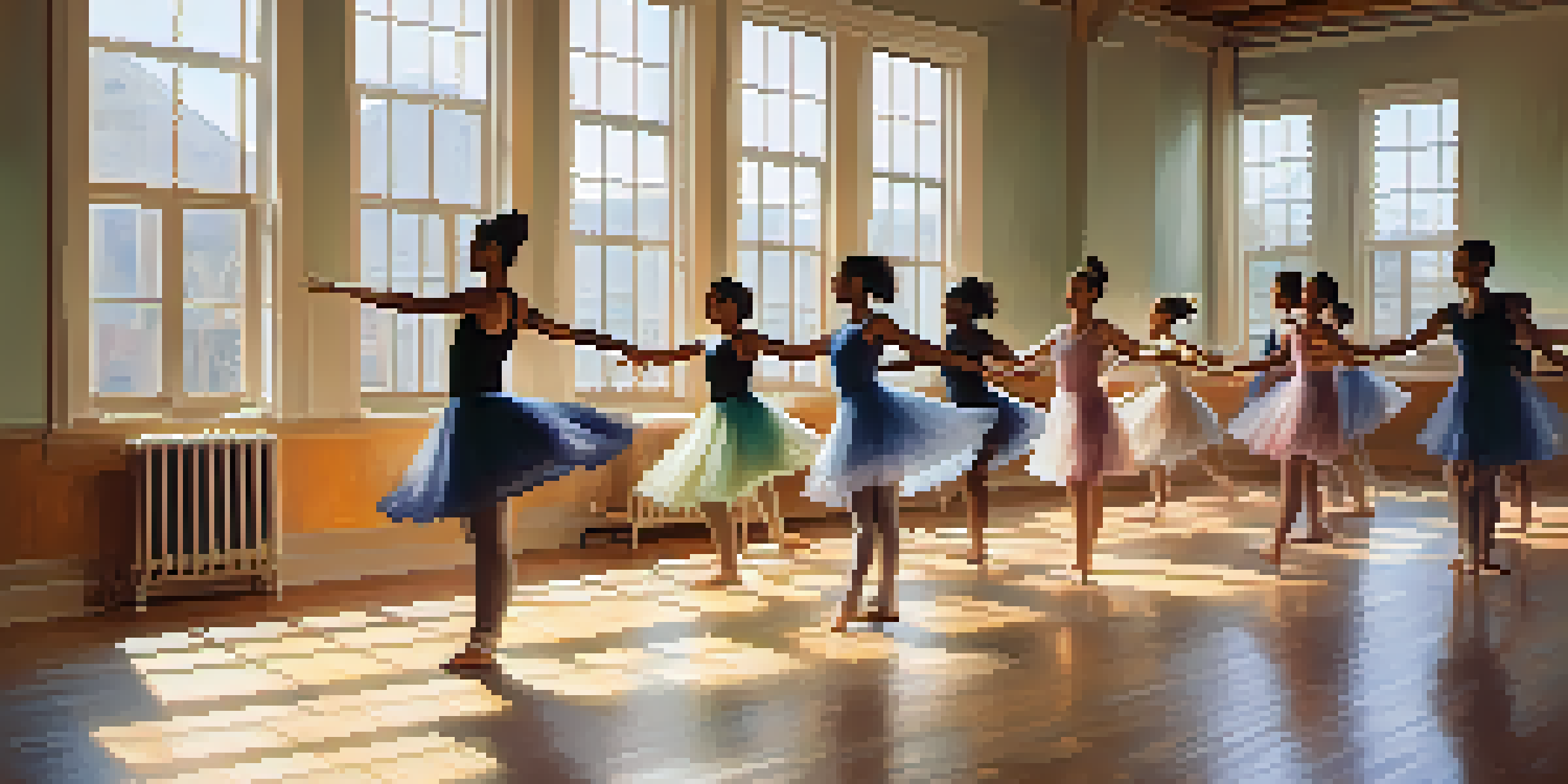Dance Therapy: A Tool for Personal Identity Exploration

Understanding Dance Therapy: A Brief Overview
Dance therapy, also known as dance/movement therapy, combines movement and psychological principles to promote emotional, cognitive, and social integration. It’s based on the idea that the body and mind are interconnected, and that movement can be a powerful means of expression.
Dance is the hidden language of the soul.
Through dance, individuals can explore their feelings and thoughts in a safe and supportive environment. This therapeutic approach is not just about dancing; it’s about using movement to unlock deeper emotions and foster self-discovery.
In essence, dance therapy provides a unique platform for personal identity exploration, allowing individuals to express who they are and who they aspire to be through their movements and interactions.
The Connection Between Movement and Identity
Our bodies often reflect our identities, from the way we hold ourselves to how we move. Dance therapy taps into this relationship by encouraging self-expression through physical movement, which can reveal aspects of our identity that words alone may struggle to convey.

For example, someone may feel liberated when dancing freely, experiencing a sense of confidence that translates into their everyday life. This newfound self-awareness can lead to profound insights about personal beliefs, values, and identity.
Dance Therapy Connects Body and Mind
Dance therapy promotes emotional and cognitive integration by using movement as a means of self-expression.
By understanding our movement patterns and how they relate to our emotions, dance therapy can facilitate a deeper understanding of who we are at our core.
Exploring Emotions Through Dance Movements
Dance therapy encourages participants to explore a wide range of emotions through movement. Whether it’s joy, sadness, anger, or fear, every emotion can find its expression through dance, leading to catharsis and healing.
The body says what words cannot.
For instance, someone grappling with grief might use slow, heavy movements to represent their feelings, while another might express joy through vibrant, quick steps. This physical representation of emotions can illuminate aspects of their identity that may have felt hidden or suppressed.
By allowing these emotions to flow through movement, individuals can gain insights into their identity and how their experiences shape who they are.
Building Community and Connection in Dance Therapy
One of the powerful aspects of dance therapy is its ability to foster community and connection. Group sessions encourage participants to move together, creating a sense of belonging and shared experience that can enhance personal identity exploration.
As participants dance alongside one another, they can observe and learn from each other’s movements, which can lead to new perspectives on their own identity. This communal experience can help individuals realize they are not alone in their struggles.
Movement Reveals Personal Identity
Through physical expression, individuals can uncover and explore aspects of their identity that words may not convey.
The bonds formed in these sessions can offer support and validation, further enriching the process of self-exploration.
Overcoming Barriers to Self-Expression
Many individuals struggle with self-expression due to societal norms or personal inhibitions. Dance therapy provides a non-verbal outlet for expression that can help break down these barriers.
For example, a person who feels anxious about speaking in public may find it easier to communicate their feelings through movement. This shift can open pathways to explore their identity without the pressure of verbal communication.
By overcoming these barriers, individuals can discover new facets of themselves, embracing their unique identities.
Cultivating Mindfulness Through Dance
Mindfulness is a key component of dance therapy, as it encourages participants to be present in their bodies and movements. This practice allows individuals to tune into their feelings and sensations, fostering greater self-awareness.
When participants focus on their movements in the moment, they can connect more deeply with their emotions. This heightened awareness can lead to revelations about their identity and how they perceive themselves.
Community Builds Connection and Growth
Group sessions in dance therapy foster a sense of belonging, enhancing personal identity exploration and support.
Incorporating mindfulness into dance therapy not only enhances the therapeutic process but also empowers individuals to embrace their authentic selves.
Real-Life Examples of Identity Transformation
There are countless stories of individuals who have experienced identity transformation through dance therapy. For instance, someone who struggled with body image found confidence and empowerment through movement, ultimately leading to a healthier self-image.
Another participant, after years of feeling disconnected from their emotions, used dance therapy to rediscover joy and creativity, which revitalized their sense of self.

These real-life examples highlight the profound impact dance therapy can have on personal identity exploration, offering hope and inspiration to those on similar journeys.
Embracing Dance Therapy as a Tool for Growth
Embracing dance therapy as a tool for personal growth can be a transformative experience. It encourages individuals to explore their identities through movement, emotion, and connection.
Whether you’re a seasoned dancer or someone who has never danced before, dance therapy can provide a welcoming space for exploration and self-discovery. It’s about movement, yes, but it’s also about understanding oneself on a deeper level.
By engaging with dance therapy, individuals open themselves up to the possibility of transformation, allowing their true identities to shine through.